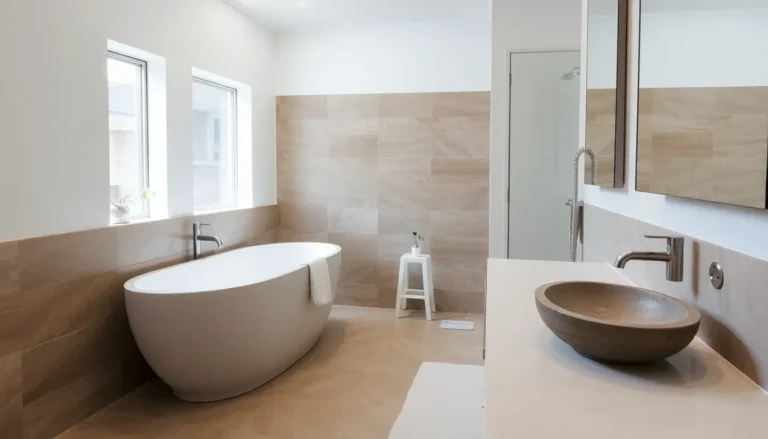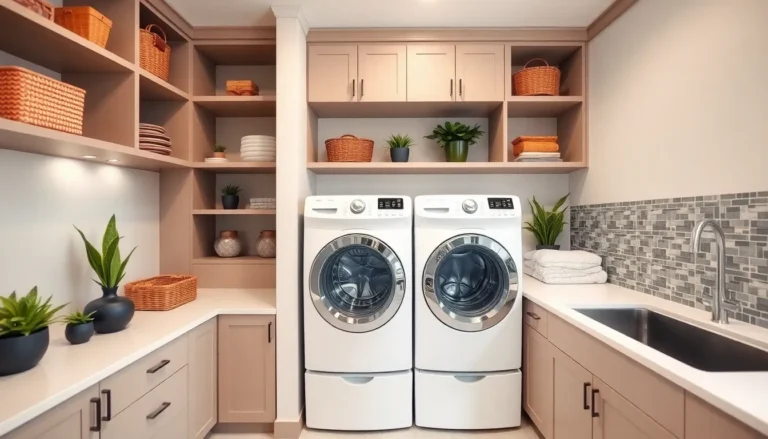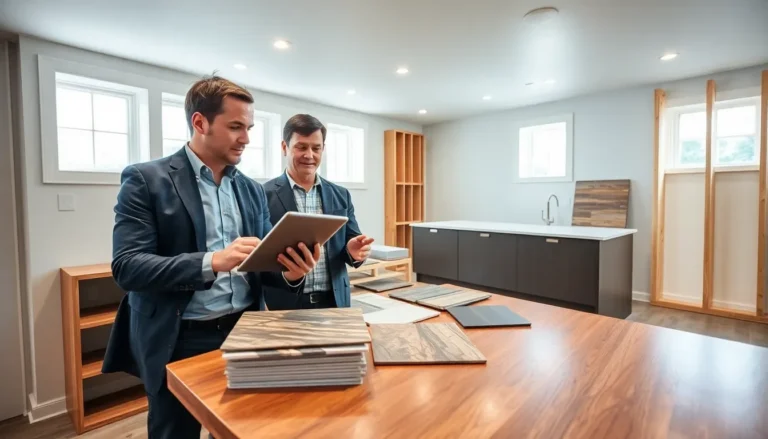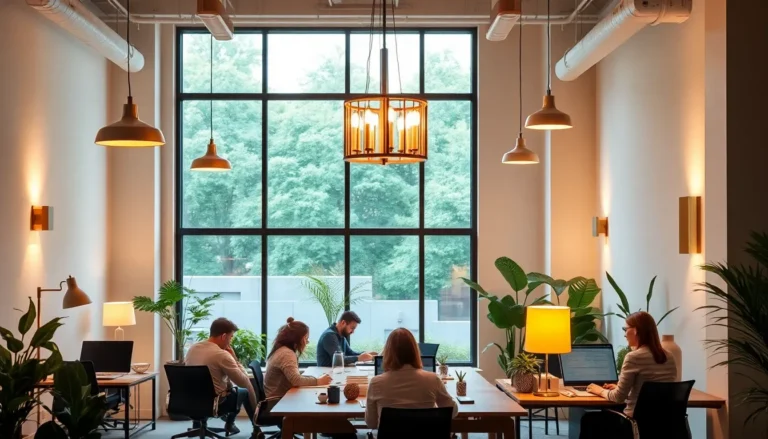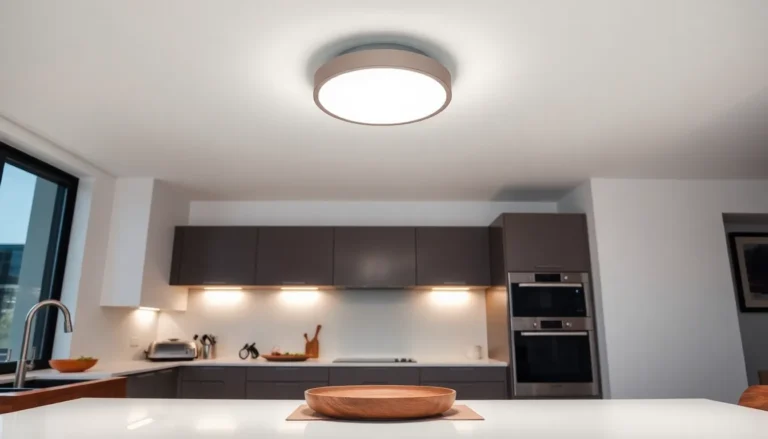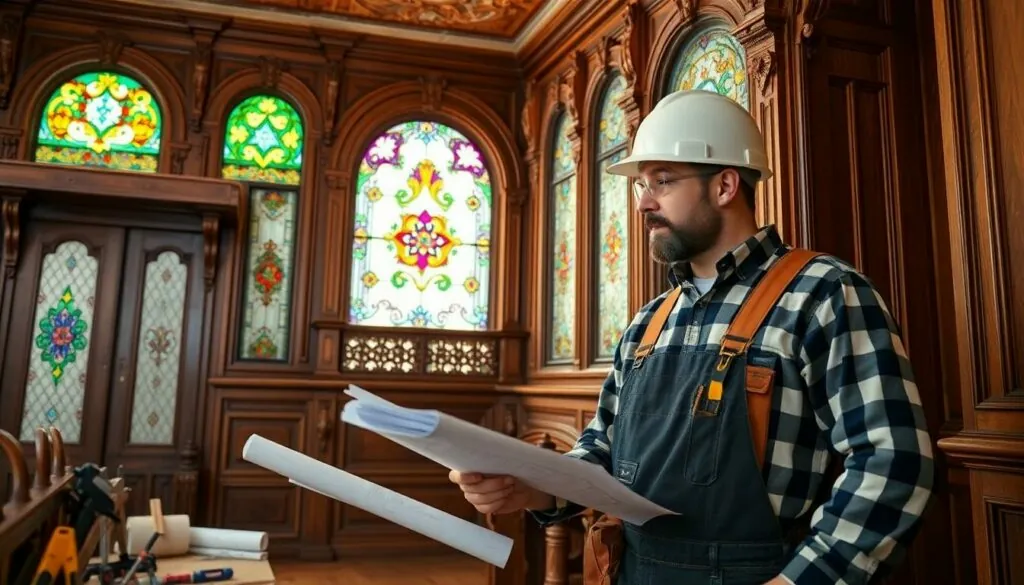Table of Contents
ToggleHistoric home renovations can feel like stepping into a time machine—one that’s just a little bit broken and needs some TLC. Imagine uncovering the charm of yesteryear while dodging the occasional ghost of questionable DIY projects. It’s a balancing act between preserving the past and making sure you don’t accidentally turn your living room into a museum exhibit.
Understanding Historic Home Renovations
Historic home renovations involve a delicate balance of preserving original features while adapting spaces for modern living. These projects require a thoughtful approach to maintain a structure’s historical integrity.
Importance of Preservation
Preservation of historic homes ensures that cultural heritage remains tangible. Maintaining original architecture enhances community character, providing residents and visitors with a glimpse into the past. Historic homes often feature craftsmanship and design elements not seen in contemporary constructions. They contribute to local identity and can have a positive impact on property values. Restoration efforts attract individuals interested in sustaining history while also enjoying modern amenities.
Common Challenges Faced
Renovating historic homes poses several challenges that can complicate projects. Adhering to regulations often requires special permits for modifications, potentially delaying progress. Homeowners may encounter unforeseen structural issues that add time and cost to renovations. Finding skilled professionals knowledgeable in historic preservation techniques often proves difficult, leading to subpar results. Existing materials may need sourcing or replicating, which can impact the renovation budgets. Balancing modern updates with preservation demands careful planning and expertise throughout the process.
Planning Your Renovation Project
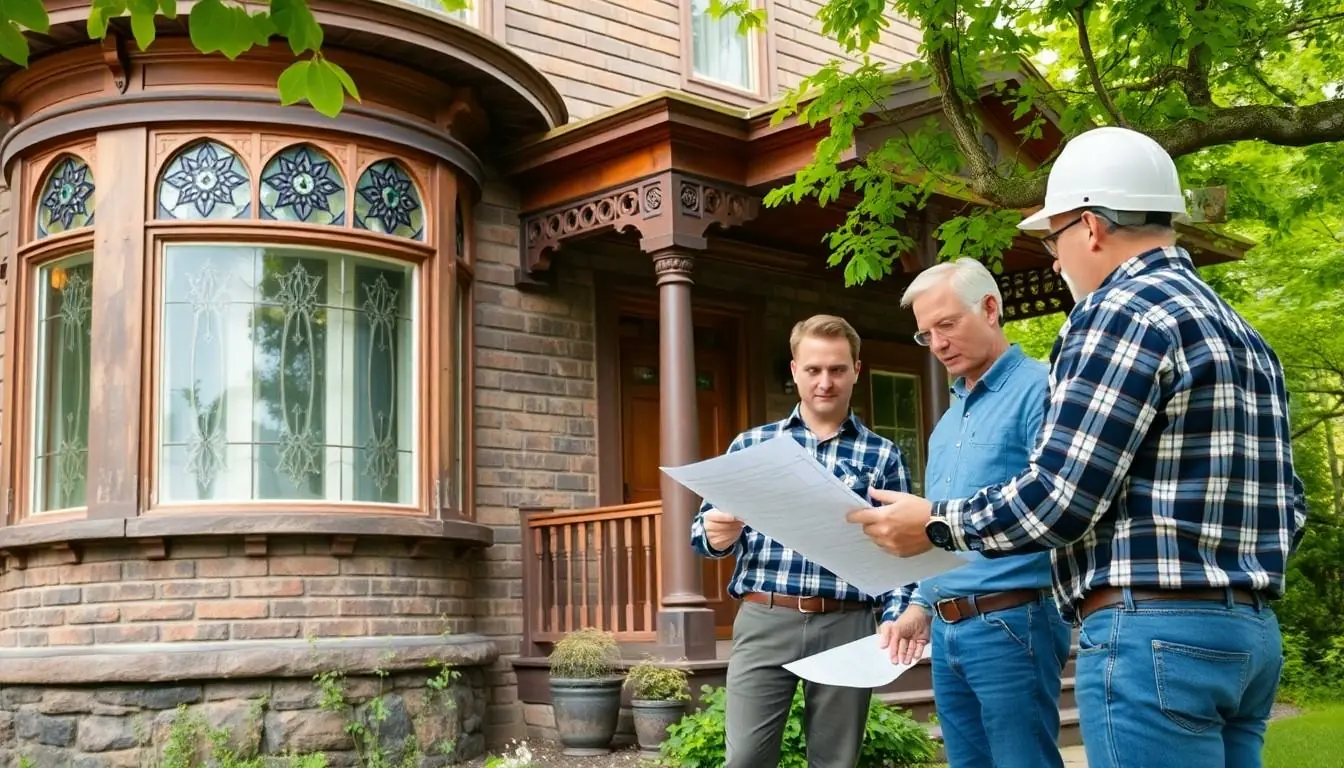
Planning a renovation project for a historic home requires thorough preparation. Key components include researching historical significance and securing necessary permits.
Researching Historical Significance
Understanding a home’s historical significance greatly influences renovation decisions. Homeowners should study the property’s history, including its architectural style and any notable past residents. Online databases, historical societies, and local libraries provide valuable resources for this research. Gathering this information helps identify original features worth preserving. Additionally, recognizing the property’s historical context allows for informed design choices that respect its heritage. Engaging with preservation organizations can also offer insights into best practices and potential funding options.
Securing Necessary Permits
Acquiring the necessary permits remains a vital step in any renovation project involving historic homes. Local building departments often have specific guidelines for renovations to preserve historical integrity. Homeowners must consult local regulations to ensure compliance with preservation standards. Developing a checklist for required permits streamlines the process and ensures all documentation is in order. Engaging with architects or contractors experienced with historic renovations can facilitate understanding of these requirements. Timely permitting avoids delays and supports a smoother renovation process, promoting a successful project outcome.
Design Considerations for Renovating
Renovating historic homes requires thoughtful design choices that honor the past while accommodating current needs. Specific considerations guide homeowners through this process.
Maintaining Original Features
Preserving original features is essential in historic home renovations. Features like moldings, staircases, and windows must remain intact whenever possible. Homeowners often consult restoration specialists to achieve this balance. Using period-appropriate materials helps maintain authenticity. Retaining architectural details enhances a home’s historical significance. Inspecting original elements can uncover unseen structural strengths or weaknesses. Repairing rather than replacing damaged features often provides better results for maintaining historic integrity. Even minor adjustments can yield substantial impacts on aesthetics and heritage.
Incorporating Modern Amenities
Modern amenities enhance living comfort while respecting historic character. Upgrading electrical, plumbing, and HVAC systems often supports efficiency without overshadowing original designs. Thoughtful placement of modern appliances and technology can blend seamlessly into existing spaces. Energy-efficient solutions provide contemporary comforts without compromising exterior aesthetics. Incorporating smart home technology, such as programmable thermostats, increases convenience and utility savings. Balancing these modern elements with the charm of the past becomes a collaborative effort between homeowners and skilled professionals. Careful planning ensures that modernization appears intentional and cohesive with the home’s historical foundation.
Successful Case Studies
Various successful renovations showcase the potential of historic home transformations. These projects not only preserve architectural heritage but also integrate modern conveniences effectively.
Renovation of a Victorian Home
A couple renovated a Victorian home, focusing on retaining ornate woodwork and original stained glass windows. They opted to restore rather than replace these features, emphasizing authenticity. Each room received careful attention with period-appropriate paint colors. Contemporary updates included energy-efficient lighting, blending seamlessly with historic elements. Professional craftsmen assisted in this meticulous process, ensuring even the smallest details were respected. The outcome highlighted a successful balance between historical integrity and modern living adjustments.
Transforming a Colonial House
In another project, an old Colonial house underwent significant transformation, enhancing functionality while preserving original charm. Homeowners prioritized maintaining the classic façade and traditional layout. They replaced outdated systems, integrating modern HVAC and plumbing discreetly without compromising design integrity. Windows were upgraded to improve energy efficiency while retaining the original aesthetic. Skilled artisans were engaged to restore hardwood floors and wood paneling, ensuring the home’s character remained intact. This careful renovation achieved a perfect blend of history and comfort, showcasing the beauty of Colonial architecture in today’s context.
Resources for Homeowners
Homeowners renovating historic properties can access various resources designed to support their efforts. Utilizing these resources facilitates informed decision-making and enhances project outcomes.
Historical Societies and Organizations
Historical societies offer invaluable insights into architectural styles, historical significance, and preservation techniques. Many organizations focus on educating homeowners about local history and providing access to archives filled with documentation. Networking with local historical societies can also connect homeowners with experienced preservationists and skilled contractors. Engaging with these organizations often reveals grant opportunities aimed at supporting restoration projects. Exploring their resources can lead to greater appreciation for a home’s heritage and a more precise renovation strategy.
Online Tools and Guides
Numerous online tools and guides serve as essential aids for homeowners navigating historic renovations. Websites such as the National Trust for Historic Preservation provide comprehensive information on preservation practices and grant resources. Interactive tools allow users to assess project feasibility and guide through necessary permits. Accessing digital archives expands a homeowner’s understanding of the original design elements and construction techniques. Utilizing these online resources enhances planning efficiency and streamlines decision-making during the renovation process.
Renovating historic homes is a rewarding endeavor that honors the past while embracing the present. Homeowners who approach these projects with care and respect can create beautiful spaces that reflect both history and modern living. By prioritizing preservation and engaging skilled professionals, they can navigate the unique challenges that arise during renovations.
Utilizing available resources and understanding the significance of their homes empowers homeowners to make informed decisions. Successful renovations not only enhance individual properties but also contribute to the cultural fabric of communities. With thoughtful planning and a commitment to authenticity, historic home renovations can truly transform spaces while celebrating their rich heritage.


